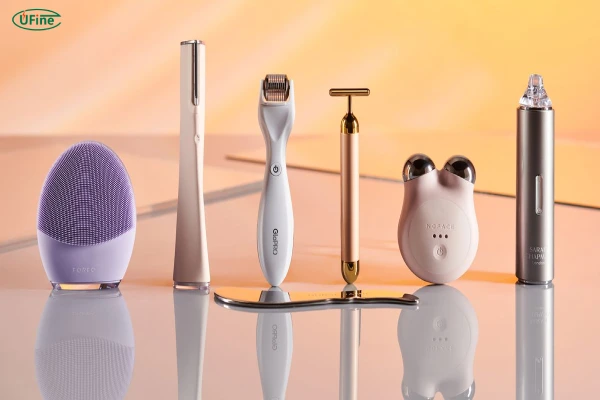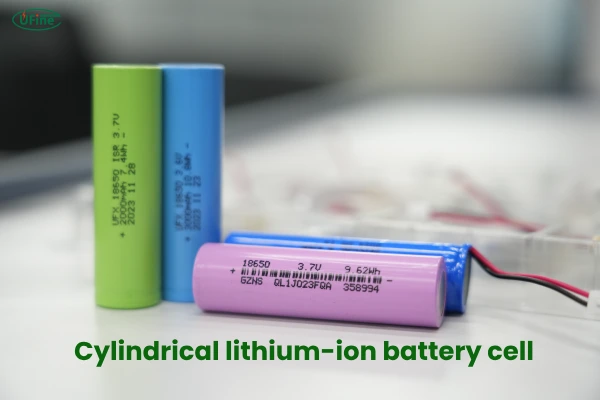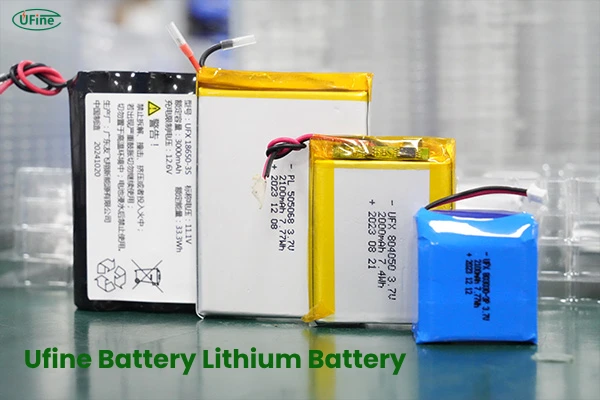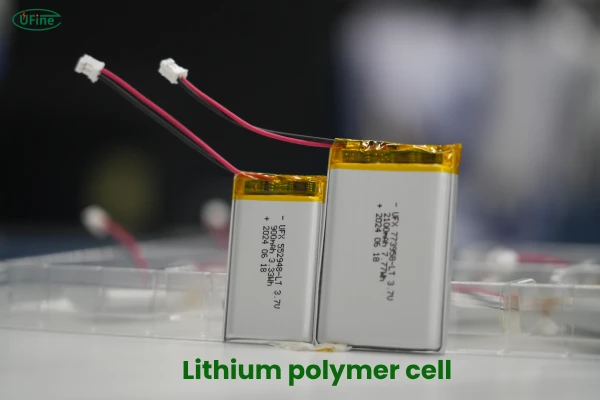Part 1. Why your beauty gadget’s battery matters
We’ve all been there—you’re in the middle of a relaxing at-home facial with your favorite LED mask, and suddenly… it dies. Or worse, your microcurrent device starts losing power mid-treatment, leaving you with uneven results. The culprit? A failing beauty gadget battery.
Most of us focus on the fancy features of our skincare devices—the wavelengths of LED therapy, the intensity of microcurrent pulses, or the speed of ultrasonic vibrations. But without a reliable battery, even the most advanced beauty gadget is just an expensive paperweight.
In this comprehensive guide, we’ll dive deep into:
✔ How different battery chemistries impact performance
✔ Why choosing the right battery is crucial for your device
✔ Warning signs of a dying battery (and how to fix it)
✔ Pro tips to extend battery lifespan
✔ Safety precautions to avoid damage (or worse—fires!)
Plus, if you’re looking for high-quality, custom lithium batteries for your beauty devices, Ufine Battery, a trusted manufacturer specializing in lithium polymer, LiFePO4, 18650, and ultra-thin batteries tailored to your needs.
Part 2. The most common beauty gadgets & their power demands
Before we talk batteries, let’s look at the most popular beauty gadgets and how much power they really need:
A. LED Therapy Masks & Devices
-
Power Requirement: Typically 3.7V–12V lithium batteries
-
Usage: 10–30 minutes per session
-
Battery Impact: Weak batteries reduce light intensity, making treatments less effective
B. Microcurrent Facial Toners
-
Power Requirement: 3V–5V (often rechargeable Li-ion)
-
Usage: Short bursts (5–10 minutes)
-
Battery Impact: Low voltage = weaker currents = poor muscle stimulation
C. Ultrasonic Skin Scrubbers
-
Power Requirement: 3.7V–7.4V (high-drain batteries preferred)
-
Usage: 5–15 minutes
-
Battery Impact: Weak batteries cause inconsistent vibrations
D. High-Frequency Wands
-
Power Requirement: 5V–12V (needs stable voltage)
-
Usage: Spot treatment (1–3 minutes per area)
-
Battery Impact: Dying batteries lead to flickering or no spark
E. Electric Facial Cleansing Brushes
-
Power Requirement: 3.7V–5V (moderate drain)
-
Usage: 1–2 minutes daily
-
Battery Impact: Weak batteries slow down brush speed
F. IPL & Laser Hair Removal Devices
-
Power Requirement: 7.4V–12V (high-capacity needed)
-
Usage: 10–30 minutes per session
-
Battery Impact: Low power = weaker pulses = ineffective hair removal
Key Takeaway: Different beauty gadgets have unique power needs. Using the wrong battery can make treatments ineffective—or even damage your device.
Part 3. How battery chemistry affects your beauty gadget’s performance
Not all batteries are created equal. Some last longer, some charge faster, and some are safer. Here’s a detailed comparison of the most common beauty gadget battery types:
| Battery Type | Voltage Range | Cycle Life | Pros | Cons | Best For |
|---|---|---|---|---|---|
| Lithium-ion (Li-ion) | 3.7V | 500-1,000 cycles | High energy density, lightweight | Can overheat if damaged | High-end LED masks, microcurrent devices |
| Lithium Polymer (LiPo) | 3.7V | 300-500 cycles | Ultra-thin, flexible shapes | Punctures can cause fires | Slim devices (wearable masks) |
| LiFePO4 (Lithium Iron Phosphate) | 3.2V | 2,000+ cycles | Extremely safe, long lifespan | Lower energy density | Medical-grade beauty tools |
| Nickel-Metal Hydride (NiMH) | 1.2V | 500 cycles | Affordable, eco-friendly | Self-discharge (~20% per month) | Budget facial brushes |
| Alkaline (Non-rechargeable) | 1.5V | Single-use | Cheap, easy to find | Not eco-friendly, weak power | Disposable tools |
| Nickel-Cadmium (NiCd) | 1.2V | 1,000 cycles | Durable, high discharge rate | Toxic, memory effect | Older-model devices |
Why Lithium Batteries Dominate Beauty Gadgets
Most modern beauty gadgets use lithium-ion (Li-ion) or lithium polymer (LiPo) batteries because:
- Higher energy density (more power in a smaller size)
- No memory effect (can recharge anytime without damage)
- Longer lifespan (500+ cycles vs. 300 for NiMH)
Looking for a custom lithium battery?
Ufine Battery specializes in high-performance lithium batteries for beauty devices, including:
- Ultra-thin LiPo batteries (for sleek, portable gadgets)
- High-rate discharge batteries (for powerful devices like IPL)
- High-temperature resistant batteries (for heated tools)
- Custom sizes & capacities (perfect fit for any device)
Need a battery that fits your beauty gadget perfectly? Contact Ufine Battery today for a customized solution!
Part 4. How to choose the right battery for your beauty gadget
Picking the wrong battery can ruin your device—or worse, make it unsafe. Here’s what to consider:
1. Voltage Compatibility
-
Too low? Device won’t turn on.
-
Too high? Risk of overheating or circuit damage.
2. Capacity (mAh)
-
Higher mAh = longer runtime
-
Example: A 1000mAh battery lasts 2x longer than a 500mAh one.
3. Rechargeability
-
Rechargeable (Li-ion, LiPo, NiMH): Cost-effective long-term
-
Disposable (Alkaline): Only for emergency use
4. Size & Shape
-
Measure your battery compartment before buying
-
Ufine Battery offers custom-sized batteries for a perfect fit
5. Discharge Rate (C-Rating)
-
High-drain devices (IPL, microcurrent) need 5C+ batteries
-
Low-drain (LED masks) work with 1C–3C
6. Temperature Resistance
-
Heated tools (cryo rollers, hot combs) need high-temp batteries
7. Brand Reliability
-
Avoid cheap knockoffs (fire hazard risk)
-
Choose certified manufacturers like Ufine Battery
Part 5. Signs your beauty gadget battery is dying
- Shortened Runtime (dies in half the usual time) → Replace soon
- Slow Charging (takes hours to reach 100%) → Battery degradation
- Overheating (gets uncomfortably hot) → Stop using immediately
- Swollen Battery (bulging casing) → Dispose safely—fire risk!
- Random Shutdowns (turns off mid-use) → Check connections or replace
Pro Tip: If your device uses a standard battery (like 18650), you can replace it yourself. For built-in batteries, contact the manufacturer—or Ufine Battery for custom replacements.
Part 6. How to extend battery life in beauty gadgets
Want your device to last? Treat the battery well. Here are practical ways to extend battery life:
- Avoid full discharges. Recharge when it hits 20–30% instead.
- Don’t overcharge. Unplug once full.
- Use the original charger. Avoid third-party chargers that may damage the battery.
- Clean battery contacts. Dust and oils can interfere with proper charging.
- Store at moderate temperatures. Avoid extreme heat or cold.
- Turn off when not in use. Even idle devices slowly drain power.
- A well-cared-for battery means better skincare results, fewer replacements, and less waste.
Part 7. Cleaning and battery safety
A clean device is a safe and effective one. Here’s how to protect both your skin and your battery:
- Unplug before cleaning.
- Use a soft, damp cloth or alcohol wipe—never submerge the device.
- Keep battery compartments dry.
- Check for corrosion or swelling.
- Use cases for storage, especially when traveling.
- Don’t expose batteries to open flames or water.
Part 8. Final thoughts
Your beauty gadget is only as good as its battery. Whether you need longer runtime, faster charging, or a custom-fit power solution, choosing the right battery makes all the difference.
For high-quality, reliable lithium batteries:
- Ufine Battery offers custom solutions for any beauty device.
- Specializing in ultra-thin, high-rate, and high-temperature batteries.
- Get the perfect battery match for peak performance.
Upgrade your beauty gadget’s power today— contact Ufine Battery for a custom quote!
Part 9. FAQs
Can I use any lithium battery in my beauty gadget?
No! Voltage, size, and discharge rate must match. Ufine Battery can customize one for you.
How long should a beauty gadget battery last?
A: 2–3 years with proper care (300–500 full cycles).
Why does my device die faster in cold weather?
Cold slows chemical reactions—keep it at room temp before use.
Are third-party batteries safe?
Only if certified (like Ufine Battery’s products)—cheap ones risk fires.
Can a swollen battery be fixed?
No! Replace it immediately—swelling means internal damage.
Related Tags:
More Articles
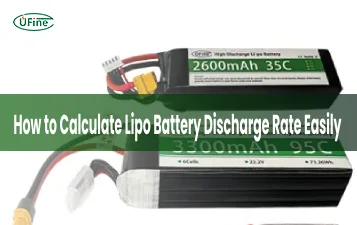
LiPo Battery Discharge Rate Guide & Calculation Tips
Understand LiPo battery discharge rates, C-ratings, and how to calculate max current. Essential guide for RC, drones, and electronics users.
High‑Capacity 3S LiPo Batteries: 5000 mAh vs. 10000 mAh
Compare 3S LiPo 5000mAh vs 10000mAh batteries by weight, power, and use. Find the best fit for your drone, RC car, or boat setup.
Top 5 Applications for Small 3S LiPo Batteries
Small 3S LiPo batteries power drones, RC gear, wearables, and robotics with high energy and low weight. Making them ideal for compact electronics projects.
Building and Charging Your Own 3S LiPo Pack: A Step‑by‑Step Guide
Learn how to build, balance, and charge a 3S LiPo battery pack safely at home with this complete DIY guide for hobbyists and beginners.
How to Choose the Right LiPo Battery Plug Type?
Discover the best LiPo battery plug types, how to choose them, and expert tips for safe usage, soldering, and maintenance.
